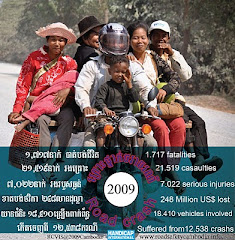Based on first statistic from Phnom Penh traffic police said that during Chinese new Year 2009 the road traffic accident increased 16 cases that cause to have 6 fatalities, 16 persons get serious injury , and other 12 persons get slight injury, this just in Phnom Penh and from 25 to 29 January 2009.
Most of traffic accident occurred in Khan Chamkamon, Daun Penh, Russey Keo, and Daun Penh. Cause of traffic accident were: drive over speeding, drunk driving, Overtaking, Driving opposite traffic flow, and not respect the traffic sign.
From Koh Santepheap Daily
Friday, 30th Jan 2009.
Common ARTS
-
new link
← Previous revision Revision as of 04:50, 23 November 2025
Line 1: Line 1:
{{Short description|Air traffic control computer system}}
{{Short de...
38 minutes ago


